
Sun allergies represent a group of allergies associated with exposure to sun light. Some people are sensitive to sun light and if they are exposed to the sun their body releases certain substances which eventually lead to specific skin changes.
The actual cause of sun allergies has not been identified yet. Still, this type of allergy may be hereditary. One of the explanations why the skin reaction occurs is that the body and its immune system treat the sun-altered skin as foreign and activate specific defensive mechanisms against it which eventually results in skin allergic reaction.
There are several types of sun allergies and they include polymorphous light eruption, actinic prurigo, photoallergic eruption and solar urticaria. They have specific characteristics and are treated differently.
Polymorphous Light Eruption
Polymorphous light eruption is a sun allergy that typically features with skin rash, redness of the affected skin and red plaques or small fluid-filled blisters. These blisters tend to bleed in case of rupture. Characteristic skin changes develop a few hours after sun-exposure. Apart from the skin changes a person may complain about chills, headache and nausea. Only exposed parts of the body develop characteristic rash. The symptoms and signs withdraw spontaneously within a couple of days. Still, the allergy is generally recurrent and tends to reappear every spring or summer.
Mild skin reaction is treated with cold compresses and in severe cases patients are administered oral antihistamines and anti-rash skin creams which contain cortisone. Extreme cases of polymorphous light eruption are treated with gradual exposure to ultraviolet light. Small and frequent doses are applied in order to achieve skin resistance to the sun.
Actinic Prurigo
Actinic prurigo is nothing but an inherited form of polymorphous light eruption. Actinic prurigo typically develops during childhood or adolescence. The symptoms and signs are the same as those in polymorphous light eruption but in case of actinic prurigo the rash predominantly affects the face. The symptoms worsen during spring and summer and the person can be treated with corticosteroids, thalidomine, antimalarial drugs, beta-carotene or UV.
Photoallergic Eruption
Photoallergic reaction develops as a consequence of sun exposure and reaction of the sun with certain chemicals which are either applied onto the skin (sunscreen, fragrances, cosmetics, ointments etc.) or taken orally (medications). The skin is covered with red rash and fluid-filled blisters. Only the exposed body parts are affected. The symptoms usually develop 2-3 days after exposure to the sun. This sun allergy is treated with a corticosteroid cream. It is essential to identify the contributor of this type of allergy and prevent repeated bout of allergy by avoiding the specific substance or product.
Solar Urticaria
Solar urticaria is rather rare sun allergy and it features with hives. Hives affect the exposed parts of the skin. The symptoms develop within minutes after the sun-exposure. Individual hives may withdraw within a couple of hours. Mild forms of solar urticaria are treated with anti-itch skin creams which contain cortisone. In severe forms patients are administered psoralen and they are then exposed to ultraviolet light.


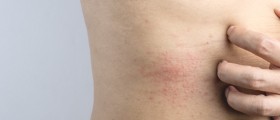


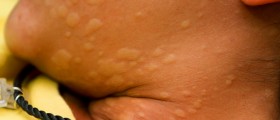

-Causes,-Symptoms-And-Diagnosis_f_280x120.jpg)


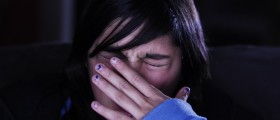



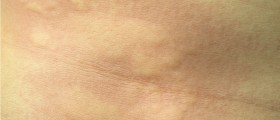
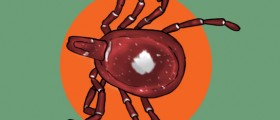

Your thoughts on this
Loading...